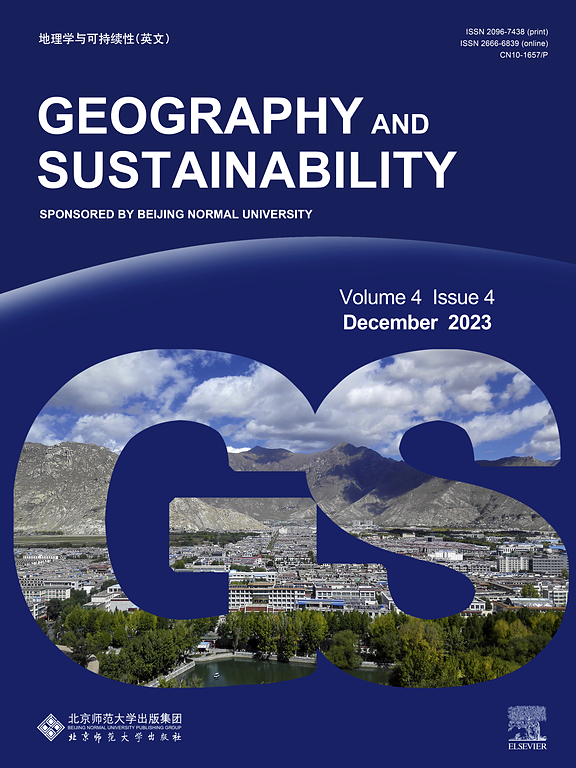Mapping human footprint changes over Qingzang Plateau
IF 8
1区 环境科学与生态学
Q1 GEOGRAPHY, PHYSICAL
引用次数: 0
Abstract
Mapping human footprint (HF) is crucial for understanding the cumulative anthropogenic pressures on the environment. However, its effectiveness is often hampered by the absence of fine-scale, high-quality spatio-temporal datasets. Addressing this gap, we present the first annual HF maps for the Qingzang Plateau (QP) from 1990 to 2020, at a 100 m × 100 m resolution, boasting an accuracy exceeding 80 %. Our findings reveal that the QP’s human-induced modifications were relatively low, with a median HF of 3.39 in 2020, significantly lower than the global average of 7.56. The northeast and mid-south regions of the QP emerged as hotspots for anthropogenic impact. Notably, over two-thirds (68.2 %) of the QP registered an HF score below 4, classifying them as largely intact. However, the QP’s average HF score has escalated more swiftly than the global mean (0.0348/yr vs. 0.0186/yr), particularly in the last decade, indicating escalating human pressures. In terms of stability, montane grasslands and shrublands comprised 75.1 % of moderately or highly altered biomes in 2020. In contrast, tropical and subtropical moist broadleaf forests witnessed the most substantial HF increases. Encouragingly, 26.29 % of the QP experienced HF reductions over the past thirty years, highlighting potential conservation opportunities. Conversely, a significant HF increase across 36.59 % of the QP underscores the pressing need to mitigate the adverse effects of intensified human activities. Our HF maps will be conducive to improve understanding the profound impacts wrought by human activities on the QP, and support the conservation planning and resource management needs, as well as decision-making related to restoration objectives.
求助全文
约1分钟内获得全文
求助全文
来源期刊

Geography and Sustainability
Social Sciences-Geography, Planning and Development
CiteScore
16.70
自引率
3.10%
发文量
32
审稿时长
41 days
期刊介绍:
Geography and Sustainability serves as a central hub for interdisciplinary research and education aimed at promoting sustainable development from an integrated geography perspective. By bridging natural and human sciences, the journal fosters broader analysis and innovative thinking on global and regional sustainability issues.
Geography and Sustainability welcomes original, high-quality research articles, review articles, short communications, technical comments, perspective articles and editorials on the following themes:
Geographical Processes: Interactions with and between water, soil, atmosphere and the biosphere and their spatio-temporal variations;
Human-Environmental Systems: Interactions between humans and the environment, resilience of socio-ecological systems and vulnerability;
Ecosystem Services and Human Wellbeing: Ecosystem structure, processes, services and their linkages with human wellbeing;
Sustainable Development: Theory, practice and critical challenges in sustainable development.
 求助内容:
求助内容: 应助结果提醒方式:
应助结果提醒方式:


